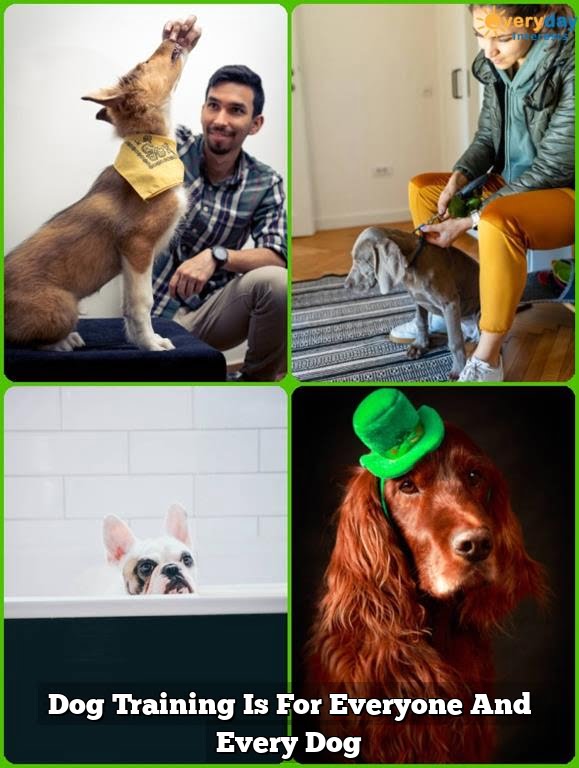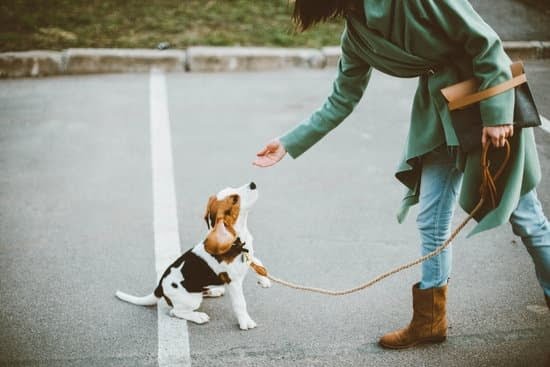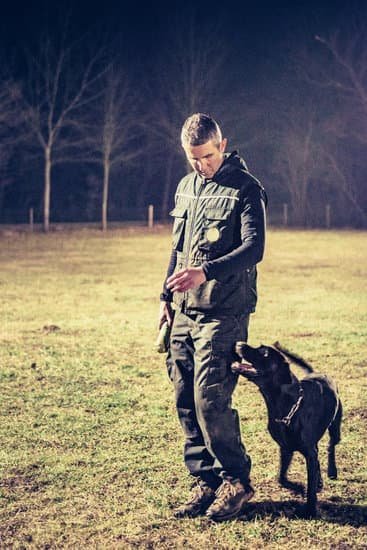Training your dog to come every time is an essential skill that can ensure their safety and strengthen the bond between you and your furry friend. Whether you are at the park, in the backyard, or even inside your home, having a reliable recall command can prevent accidents and allow for more freedom and off-leash enjoyment. In this article, we will explore effective techniques and strategies to train your dog to come consistently.
Before diving into the training process, it is crucial to understand the nature of dogs and their instinctual behaviors. By nature, dogs have a desire to explore their environment, follow scents, and engage in social interactions with both humans and other animals. This natural curiosity can sometimes lead them astray or make them easily distracted. However, with proper training and guidance, you can harness their instincts for a successful recall.
Establishing a strong foundation is key to any successful training endeavor. Building a positive relationship with your dog based on trust, mutual respect, consistent boundaries, and clear communication lays the groundwork for effective recall training. The stronger the bond between you and your dog, the more likely they are to respond promptly when called. In the sections that follow, we will delve into specific techniques that will help you teach and reinforce the “come” command effectively.
Understanding the nature of dogs and their instinctual behaviors
The Instinctual Behaviors of Dogs
Before diving into the specifics of training your dog to come every time, it is crucial to understand the nature of dogs and their instinctual behaviors. Dogs are social animals with a strong pack mentality. This means that they have a natural inclination to follow leaders and establish hierarchies within their groups.
In addition to their pack mentality, dogs have certain instinctual behaviors that influence their actions. For example, dogs have a high prey drive, which can cause them to become easily distracted by small animals or fast-moving objects. They are also highly territorial and protective of their space and loved ones. Understanding these inherent instincts will help you tailor your training methods to meet your dog’s needs effectively.
The Importance of Understanding Your Dog
To train your dog successfully, it is essential to recognize that not all dogs are the same. Each dog breed has unique traits and characteristics that influence their behavior and response to training. Some breeds may be more independent or stubborn, while others may be naturally attentive and eager to please.
By understanding your individual dog’s temperament, you can adapt your training techniques accordingly. This knowledge will allow you to use methods that motivate and engage your dog effectively while also considering any specific challenges or limitations they may have based on their breed or personality.
Using Positive Reinforcement for Effective Training
Positive reinforcement is a fundamental principle in dog training that involves rewarding desired behavior rather than focusing on punishment for unwanted behavior. Using positive reinforcement techniques consistently reinforces the idea that coming when called is always a positive experience for your dog.
When teaching the “come” command, start in an area with minimal distractions and call your dog using an enthusiastic tone of voice. As soon as they come towards you, reward them with praise, treats, or playtime with their favorite toy – something that motivates them strongly. Consistently rewarding your dog for coming when called will help them associate the “come” command with positive outcomes and increase the likelihood of them responding promptly in the future.
By understanding your dog’s instinctual behaviors, recognizing their individual needs, and utilizing positive reinforcement techniques, you can set a strong foundation for training your dog to come every time. In the next section, we will explore how to effectively establish a positive relationship with your furry friend, which is crucial for successful training.
Establishing a strong foundation
Creating a Positive Environment
When it comes to training your dog to come every time, establishing a strong foundation is crucial. Building a positive relationship with your dog sets the stage for successful training sessions and helps strengthen the bond between you and your furry friend. Creating a positive environment plays a significant role in this process.
Start by ensuring that your dog feels safe and secure in their surroundings. Provide them with a comfortable space where they can relax and rest. Make sure they have access to fresh water, food, and appropriate toys or chew items to keep them stimulated.
In addition, it’s important to establish a routine for your dog. Dogs thrive on consistency, so having a schedule helps them know what to expect. Set consistent meal times, exercise periods, and play sessions to provide structure in their lives. This regularity will help them feel secure and build trust with you as their caregiver.
Positive Reinforcement: The Key to Success
Positive reinforcement is an effective technique for building a positive relationship with your dog while training them to come every time. This approach involves rewarding desired behaviors rather than punishing unwanted ones.
Use treats, praise, or even playtime as rewards when your dog responds correctly to the “come” command. As soon as they come to you, offer the reward immediately while providing verbal praise such as “good job” or “well done.” Be consistent with your rewards so that your dog understands that coming when called brings positive outcomes.
Furthermore, avoid using negative reinforcement or punishment during training sessions. Yelling at or scolding your dog can create fear and anxiety, which hinders their ability to learn effectively. Remember, dogs want to please their owners naturally; utilizing positive reinforcement reinforces their good behavior and encourages them to continue following commands.
Building Trust Through Bonding Activities
To establish a strong foundation with your dog, make bonding activities a part of your routine. Engage in activities that promote trust, such as gentle petting and grooming sessions. These moments create positive associations for your dog and help develop a sense of security.
Additionally, regular exercise is important not only for physical health but also for building a strong bond between you and your dog. Take your dog on daily walks or play games like fetch to burn off energy while spending quality time together. Regular exercise helps reinforce the idea that you are their trusted leader, which strengthens the relationship and makes training sessions more effective.
By dedicating time and effort to build a positive relationship with your dog, you pave the way for successful training sessions. Establishing a safe environment, utilizing positive reinforcement techniques, and engaging in bonding activities will set the stage for effectively teaching your dog to come every time you call them.
Mastering the basics
Teaching your dog to come when called is one of the most important commands you can teach them. It not only ensures their safety but also allows for a stronger bond between you and your furry friend. In this section, we will discuss the basics of teaching and reinforcing the “come” command.
To start, it’s crucial to choose a specific word or phrase that will serve as the cue for your dog to come. Whether it’s “come,” “here,” or any other word of your choice, consistency is key. Use this word consistently every time you want your dog to come to you.
With the cue established, it’s time to begin training. Start in a quiet and familiar environment with minimal distractions. Put a leash on your dog and allow them to wander freely within a limited space. When they are a few feet away from you, use the cue word followed by positive reinforcement such as praise or treats when they come to you. Repeating this exercise multiple times helps them associate the command with positive rewards.
Next, gradually increase the distance between yourself and your dog before giving the “come” command. Be patient and maintain an upbeat tone while using encouraging gestures such as crouching down or clapping hands to entice them towards you. Reinforce their correct response with rewards each time until they consistently obey from various distances.
In addition to distance, practice duration by asking your dog to stay with you for longer periods before rewarding them. This helps build reliability in their response over time. Remember never to scold or punish your dog if they do not immediately respond; this can create negative associations and hinder their progress.
Using positive reinforcement techniques throughout the training process is essential for success. Rewarding your dog with treats, verbal praise, petting, or playtime lets them know they did something right and encourages desired behavior repetition.
By mastering the basics of teaching and reinforcing the “come” command, you lay the foundation for a well-trained dog. Remember, consistency, patience, and positive reinforcement are key elements in this process. In the next section, we will discuss overcoming common challenges and improving your dog’s focus amidst distractions.
Using positive reinforcement techniques to enhance training
Positive reinforcement is an effective and humane training technique that can be used to enhance your dog’s training in coming every time. By using positive reinforcement, you are rewarding your dog for exhibiting the desired behavior, which in this case is coming to you when called. This technique helps to strengthen the bond between you and your dog and motivates them to repeat the behavior.
One of the key aspects of positive reinforcement is finding the right rewards that motivate your dog. Every dog is different, so it’s important to find out what truly excites and motivates your furry companion. This could be anything from treats, praise, toys, or even playtime. By using these rewards consistently when your dog comes to you upon hearing the command, you are reinforcing their understanding that coming when called leads to good things.
Timing is crucial when using positive reinforcement. It’s important to reward your dog immediately after they successfully come when called. This helps them associate the reward with their action of coming. Delayed or inconsistent rewards can confuse your dog and make it harder for them to understand what behavior is being reinforced.
Consistency is also key in utilizing positive reinforcement effectively. Make sure everyone in your household uses the same command word and follows through with rewarding your dog when they come every time. Inconsistency can lead to confusion and mixed signals for your furry friend, making it harder for them to comprehend what is expected of them.
Using a marker word or clicker during positive reinforcement training can also be beneficial. A marker word, such as “yes” or “good,” lets your dog know that they have done the desired behavior correctly and that a reward will follow soon after. Consistently pairing this marker word with a reward helps reinforce their understanding of what they are being rewarded for.
By implementing positive reinforcement techniques consistently during training sessions, you’ll not only strengthen your relationship with your dog but also increase their motivation to come every time they hear the command. Remember, training takes time and patience, so be sure to celebrate small successes along the way.
| Positive reinforcement techniques | Benefits |
|---|---|
| Using treats as rewards | Motivates your dog to come consistently when called as they associate it with getting something they enjoy. |
| Praising and petting your dog | Reinforces the positive behavior and strengthens the bond between you and your furry friend. |
| Providing playtime or access to toys | Gives your dog a fun reward for coming when called, making them more likely to repeat the behavior. |
Overcoming common challenges
In order to train your dog to come every time, it is essential to overcome common challenges that may arise during training. One of the most common challenges is dealing with distractions and improving your dog’s focus. Dogs are naturally curious creatures, and they can easily be distracted by various stimuli in their environment. However, with patience and consistency, you can teach your dog to maintain focus and come to you even in the presence of distractions.
One effective way to overcome distractions is by gradually increasing the level of difficulty during training sessions. Start by practicing in a quiet and familiar environment without any distractions. Once your dog consistently responds to the “come” command in this controlled setting, gradually introduce mild distractions such as toys or low-level noises.
When introducing distractions, it is important to maintain a positive and patient attitude. Use high-value treats or rewards that are especially enticing for your dog during training sessions. By associating the “come” command with positive experiences, your dog will learn that responding to the command brings about rewards.
Another approach to improving focus is by teaching your dog impulse control exercises. These exercises will help your dog resist the urge to give in to distractions and instead stay focused on you. For example, you can practice using the “stay” command while gradually increasing the distance between you and your dog. This will enhance their ability to concentrate on following a command despite any potential distractions around them.
Additionally, it can be helpful to incorporate mental stimulation into your training sessions. Engaging your dog’s mind through interactive games or puzzle toys can tire them out mentally, making it easier for them to stay focused during training.
By patiently addressing distractions and consistently reinforcing the “come” command during training sessions, you will gradually improve your dog’s focus and ability to respond reliably in various situations.
| Common Challenges | Tips |
|---|---|
| Distractibility | – Start in a controlled environment without distractions
|
| Improving Focus | – Teach impulse control exercises
|
Advanced training techniques
Adding distance, duration, and distractions is a crucial step in training your dog to come every time. Once your dog has mastered the basics of the “come” command, it’s important to gradually increase the difficulty level to ensure they can reliably respond in any situation. This section will provide you with advanced training techniques to help you achieve this goal.
Adding distance
Start by increasing the distance between you and your dog when giving the “come” command. Begin in a familiar and secure environment, such as your backyard or a small enclosed area. Command your dog to “come” from a short distance away and gradually increase the distance as they improve their response. Remember to reward them with praise, treats, or their favorite toy each time they successfully come to you.
Extending duration
Another important aspect of advanced training is teaching your dog to stay with you for longer periods of time after they respond to the “come” command. Begin by having them stay for just a second or two after coming to you before giving them their reward. Gradually increase the duration they have to stay with you before being rewarded.
Introducing distractions
Dogs are naturally curious creatures and can easily be distracted by various stimuli in their environment. To ensure that your dog’s response is reliable even in distracting situations, slowly introduce controlled distractions during training sessions. Start with mild distractions like toys or low-level noises and gradually progress to more challenging ones like other people or animals passing by.
It’s important to remember that increasing distance, duration, and distractions should be done gradually and at a pace that suits your individual dog’s learning ability. Pushing them too quickly may lead to confusion or frustration which can hinder their progress. Stay patient and consistently reinforce positive behavior through rewards and praise.
By incorporating these advanced techniques into your training routine, you can improve your dog’s response to the “come” command in a variety of real-life scenarios.
Troubleshooting
Common issues may arise when training a dog to come every time, but it’s important not to get discouraged. By troubleshooting these issues and problem-solving, you can continue making progress in your training efforts. Here are some common issues that may arise and strategies for addressing them:
- Lack of motivation: Sometimes dogs may not be motivated to come when called because they don’t see a reward or value in doing so. To address this, make sure you are using high-value rewards such as treats or toys that your dog finds enticing. You can also increase motivation by incorporating play and praise into the training process.
- Distractions: Dogs have a natural curiosity and can easily become distracted by their environment, especially in new or stimulating environments. To overcome distractions, start training in a quiet and familiar space before gradually introducing more distractions. Practice recall exercises with increased levels of distraction, such as other people or dogs nearby, to help your dog learn to come even in challenging situations.
- Inconsistent training: Consistency is key in dog training. If you are inconsistent with your commands or expectations, it can confuse your dog and hinder their progress. Make sure everyone in the household is using the same commands and methods consistently. Stick to a regular training schedule and reinforce the “come” command regularly throughout the day.
- Fear or anxiety: Some dogs may have fear or anxiety around certain situations or experiences, which can make them reluctant to come when called. It’s important to create a positive and safe environment for your dog so they feel comfortable coming to you. Gradual desensitization techniques can help reduce fear or anxiety triggers while rewarding calm behavior.
| Common Issue | Solution |
|---|---|
| Lack of motivation | Use high-value rewards/Focus on play and praise |
| Distractions | Start training in a quiet space/Gradually introduce distractions |
| Inconsistent training | Ensure everyone uses consistent commands and methods/Stick to a regular training schedule/Reinforce “come” command regularly |
| Fear or anxiety | Create a positive and safe environment/Gradual desensitization techniques/Reward calm behavior |
By addressing these common issues, you can troubleshoot and find solutions for any challenges that arise during your training sessions. Remember to remain patient and consistent in your efforts, as building a strong foundation and positive relationship with your dog is key to successful recall training.
Maintaining consistency and reinforcing the “come” command in various scenarios
Once your dog has mastered the basic “come” command, it is crucial to maintain consistency and reinforce this behavior in various scenarios. Dogs learn through repetition and practice, so it is important to continue training and reinforcing the “come” command in different situations to ensure that it becomes a reliable behavior for your dog.
One effective way to maintain consistency is by practicing the “come” command in different environments. Start in a familiar, controlled environment such as your backyard or living room. Gradually progress to more distracting places such as a park or a busy street. By exposing your dog to different scenarios, you are teaching them that the “come” command applies no matter where they are.
Another important aspect of maintaining consistency is by using the same verbal cues and hand signals consistently. Dogs rely on consistent cues to understand what is expected of them. Use a clear and distinct verbal cue such as saying “come” in a firm yet positive tone. You can also use a hand signal like raising your arm straight up or pointing towards yourself. Consistency in these cues will help solidify your dog’s understanding of the “come” command.
In addition to practicing in different environments, it is also important to train for different distractions. Introduce controlled distractions during training sessions so that your dog learns to focus on you regardless of what may be happening around them. For example, have someone walk by or bounce a ball nearby while giving the “come” command. Gradually increase the level of distraction as your dog becomes more proficient at responding to the command.
Ensuring consistency and reinforcing the “come” command in various scenarios takes time and patience but will ultimately lead to a reliable recall behavior from your dog. Consistently practicing in different environments and with varying distractions will help generalize their response, making it more likely that they will come every time regardless of where you are or what is happening around you.
Remember, training should be a continuous process, so make sure to continue reinforcing the “come” command even after your dog has achieved a reliable recall.
Understanding the limitations
Recognizing when additional support is necessary is an important aspect of training your dog to come every time. While many dogs can be successfully trained using positive reinforcement techniques, there may be instances where additional support and resources are required.
One common limitation in training dogs to come every time is the dog’s age or breed. Puppies and younger dogs may have a harder time mastering the “come” command due to their high energy levels and shorter attention spans. It is essential to adjust your expectations and be patient when training a young dog, as they may require more time and repetition to fully grasp the command.
Similarly, some breeds are known for being more independent or stubborn, which can make training the “come” command more challenging. Breeds such as hounds or terriers may have a stronger prey drive or a natural inclination to follow their instincts rather than obey commands. In these cases, seeking guidance from an experienced trainer or behaviorist who specializes in working with specific breeds can be beneficial.
Another limitation that may require additional support is if your dog has had previous negative experiences with recall training or struggles with fear or anxiety. Traumatic incidents, such as getting lost or being punished for coming when called, can create aversions to the command. In these situations, it is crucial to work with a professional who can help address any emotional or behavioral issues through gentle and positive training methods.
Additionally, some dogs may have specific physical limitations that affect their ability to come every time reliably. Dogs with hearing impairments or certain medical conditions may require alternative forms of communication or specialized training techniques. Seeking guidance from professionals who specialize in working with differently-abled dogs can provide valuable insights and strategies for overcoming these limitations.
Recognizing when additional support is necessary is crucial for effective training. Whether it be seeking breed-specific guidance, addressing fear-based behaviors, or accommodating physical limitations, having access to resources and expertise will greatly increase the likelihood of successfully training your dog to come every time. By acknowledging and addressing these limitations, you are setting yourself and your dog up for success in achieving consistent recall.
Celebrating success
Recognizing Progress
One of the most important aspects of training your dog to come every time is celebrating the milestones and progress achieved along the way. As a responsible pet owner, it is essential to acknowledge and reward your dog’s efforts as they learn and master this crucial command. By recognizing their achievements, you not only motivate them but also strengthen your bond with your furry companion.
Using Positive Reinforcement
Positive reinforcement is a highly effective technique when celebrating success in training your dog to come every time. Each time your dog responds correctly to the “come” command, make sure to offer enthusiastic praise, treats, or their favorite toy as a reward. By associating this positive experience with obeying your command, you reinforce their understanding of the behavior you desire.
Setting Milestones
Breaking down the training process into smaller milestones can give you and your dog a sense of accomplishment throughout the journey. Start by setting achievable goals for your dog, such as consistently coming when called within a certain distance or ignoring distractions while coming to you. Celebrate each milestone reached by offering rewards and praise accordingly.
Personalized Celebrations
Every dog is unique, so think about what will motivate and excite your furry friend during these celebrations. Some dogs may enjoy playtime with other dogs as a reward while others may prefer a special walk or trip to their favorite park. Tailor these celebrations to suit their individual preferences, ensuring that they are truly meaningful for them.
By celebrating milestones achieved during training sessions, you can keep the process positive and engaging for both you and your dog. This continuous reinforcement will create a strong foundation for future obedience training and ensure that the “come” command becomes second nature for your beloved companion.
Conclusion
In conclusion, training your dog to come every time is an essential aspect of responsible pet ownership. It not only ensures the safety and well-being of your furry friend but also enhances your bond with them. Understanding the nature of dogs and their instinctual behaviors is crucial in establishing a strong foundation for training. By building a positive relationship based on trust and respect, you will lay the groundwork for successful training.
Throughout the training process, it is important to use positive reinforcement techniques to make learning enjoyable for your dog. Rewarding them with praise, treats, or playtime will motivate them to respond to the “come” command consistently. While there may be common challenges such as dealing with distractions and improving focus, employing techniques like redirecting attention and gradually adding distance, duration, and distractions will help overcome these obstacles.
It is vital to maintain consistency in training and reinforce the “come” command in various scenarios. Taking your dog to different environments and practicing recall exercises will ensure that they respond reliably regardless of the situation. However, it is also important to recognize when additional support is necessary. Seeking professional help or joining obedience classes can provide guidance and expertise if you encounter difficulties during training.
Ultimately, celebrating milestones achieved in training the dog to come every time should be acknowledged. The rewards of having a well-trained dog go beyond mere convenience; it creates a harmonious relationship between you and your pet based on trust and understanding. Ongoing training and practice are essential not only for reinforcing learned behaviors but also for developing new skills and maintaining a well-behaved canine companion.
With patience, consistency, and dedication, you can successfully train your dog to come every time. Remember that each dog progresses at their own pace, so be sure to tailor your approach according to their individual needs. Enjoy the journey of training your furry friend while reaping the countless benefits it brings both for you and for them – a truly rewarding experience.
Frequently Asked Questions
Why does my dog not come every time when called?
There can be several reasons why a dog may not come every time when called. One possibility is that the dog has not been properly trained to respond reliably to the recall command. Lack of consistency in training sessions or inadequate reinforcement could result in the dog not fully understanding the command or choosing not to obey it.
Another reason could be distractions in the environment, such as other animals, exciting smells, or engaging activities that capture the dog’s attention and divert their focus away from coming when called. Additionally, fear or anxiety may also cause a dog to hesitate or refuse to come when called, as they might associate the recall with negative experiences.
What to do if dog won’t come inside?
If your dog refuses to come inside, it is important to approach the situation calmly and patiently. Forcing or physically dragging them can create negative associations and make them less inclined to comply in the future. Start by using positive reinforcement techniques such as treats, toys, or praise to encourage your dog to follow you inside willingly.
Make sure that going indoors is associated with something enjoyable for your furry companion, so they are more motivated to cooperate. You can also try distracting them from whatever is holding their attention outside by redirecting their focus on something appealing indoors. If all else fails, considering consulting a professional dog trainer who can provide guidance tailored to your specific situation.
How do you discipline a dog that doesn’t listen?
When disciplining a dog that doesn’t listen, it is crucial to focus on positive reinforcement rather than punishment-based approaches. Harsh discipline methods like yelling, physical reprimands, or isolation can damage your relationship with your pet and potentially lead to fearful or aggressive behaviors. Instead, use rewards and incentives to motivate your dog and reinforce desired behaviors.
Consistency in training is key; establish clear rules and boundaries for your pet consistently enforce them through positive reinforcement techniques like treats or verbal praise whenever they display good listening behavior. Additionally, consider reinforcing commands through leash walking exercises and mental stimulation activities that engage them mentally while building a stronger bond between you and your dog.

Welcome to the blog! I am a professional dog trainer and have been working with dogs for many years. In this blog, I will be discussing various topics related to dog training, including tips, tricks, and advice. I hope you find this information helpful and informative. Thanks for reading!





